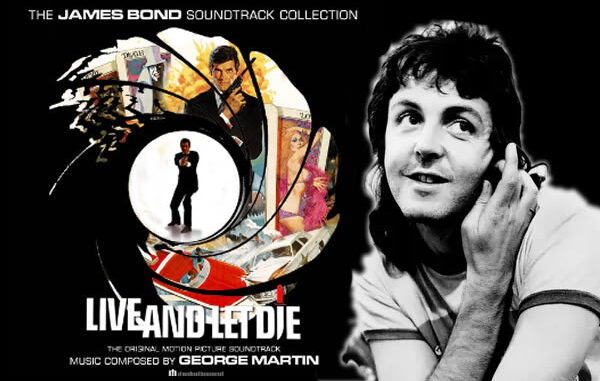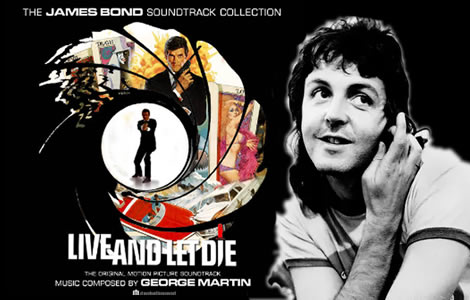
The 1973 James Bond film “Live and Let Die” took audiences on a thrilling ride through exotic locations and unprecedented action scenes. Starring Roger Moore in his first appearance as 007, the film stands out for its vivid portrayal of the voodoo culture in Haiti, a colourful dictatorship at the time.

The movie’s most memorable scenes include a hair-raising escape from a crocodile farm and a high-speed chase featuring flying speedboats, both of which added to the film’s unique charm and excitement.
The Atmospheric Soundtrack by Paul McCartney and Wings
The soundtrack for “Live and Let Die” played a crucial role in capturing the film’s exotic and suspenseful atmosphere. Composed by Paul McCartney and performed by his band Wings, the title track vividly recreated the mysterious and thrilling ambience of the film’s voodoo theme.
The song’s orchestration, featuring a blend of rock elements and orchestral arrangements, effectively conveyed the intensity and excitement of the movie’s plot.
The use of dramatic crescendos and dynamic shifts in the music mirrored the film’s unpredictable twists and turns, making the soundtrack an integral part of the overall cinematic experience.
A Global Smash Hit
The “Live and Let Die” record was not only a perfect match for the film but also a massive hit worldwide.
Released as a single in 1973, the song achieved significant commercial success, particularly in Europe, the UK, and the United States. In the UK, it climbed to number nine on the charts, while in the US, it reached number two on the Billboard Hot 100.
The song’s success was bolstered by its widespread airplay on radio stations around the world, making it one of the most recognizable Bond themes of all time.
Paul McCartney and Wings’ Creative Brilliance
Paul McCartney’s collaboration with producer George Martin, who had previously worked with The Beatles, brought a level of sophistication and polish to the “Live and Let Die” track.
The song’s innovative blend of rock and orchestral music showcased McCartney’s creative brilliance and ability to push musical boundaries.
Wings’ energetic performance and McCartney’s powerful vocals added an extra layer of intensity to the song, making it a standout hit in their discography.
Cultural Impact and Enduring Popularity
“Live and Let Die” has left a lasting impact on popular culture and continues to be celebrated as one of the greatest Bond themes ever created.
Its influence extends beyond the film, with numerous covers and performances by artists from various genres. The song’s enduring popularity is evident in its frequent inclusion in McCartney’s live performances, where it remains a fan favorite.
The Legacy of “Live and Let Die”
The success of “Live and Let Die” cemented Paul McCartney and Wings’ status as major contributors to the James Bond legacy. The song’s dynamic and powerful composition set a new standard for Bond themes, influencing subsequent contributions to the franchise. The track’s ability to capture the essence of the film while standing alone as a memorable and impactful piece of music is a testament to McCartney’s genius and the enduring appeal of the James Bond series.
Part of the Capitol fm Bond repertoire
Paul McCartney and Wings’ “Live and Let Die” remains a timeless classic, both as a song and as a pivotal element of the James Bond film it accompanied. The combination of thrilling action, exotic locations, and a masterful soundtrack created an unforgettable cinematic experience that continues to resonate with audiences worldwide. As a global hit, “Live and Let Die” showcases the enduring power of music to enhance storytelling and leave a lasting impression on popular culture.
